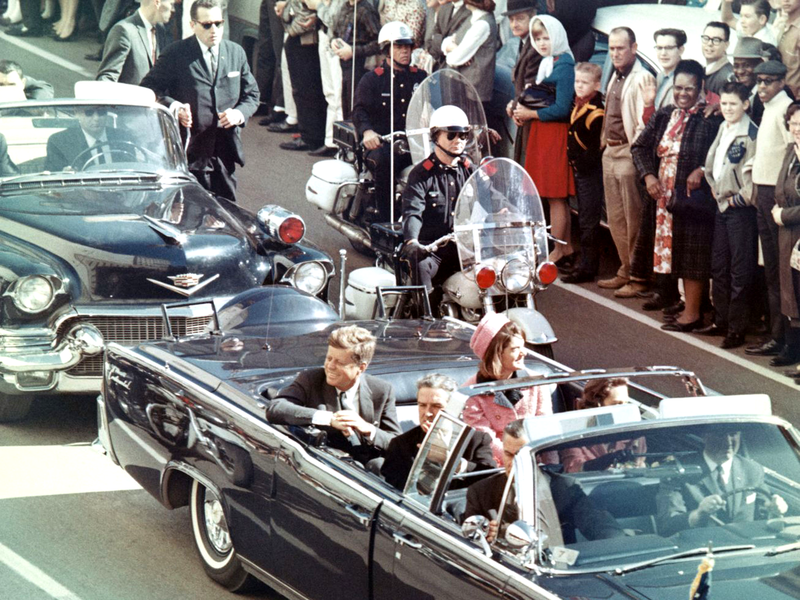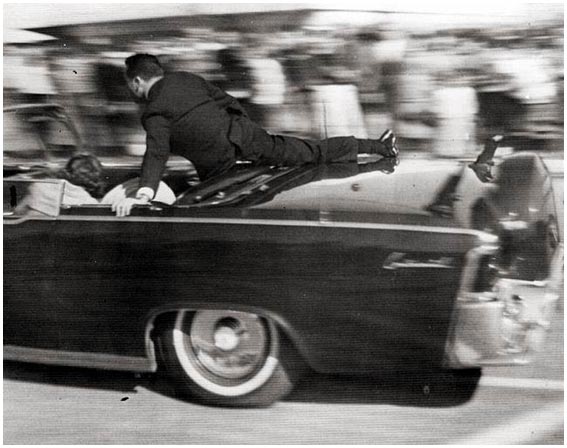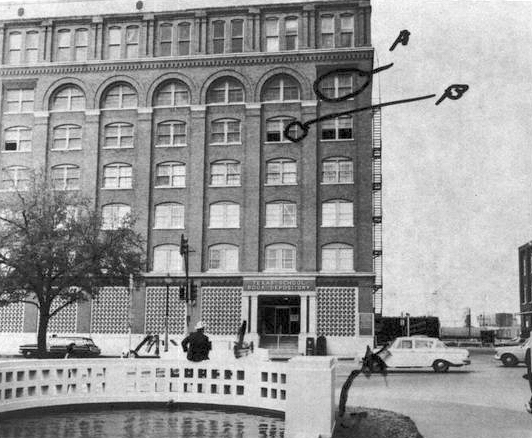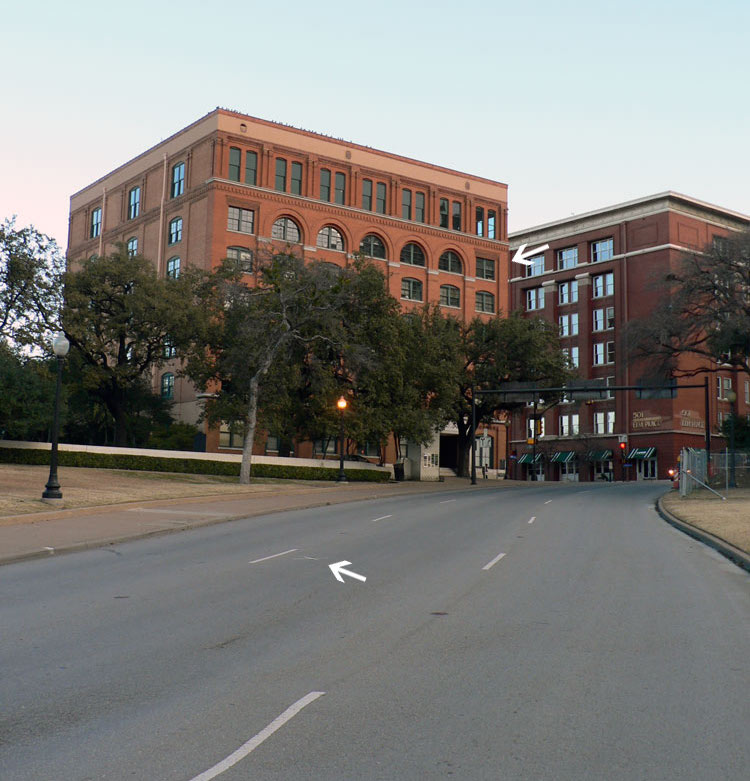Assassination of John F. Kennedy

Assassination of John F. Kennedy
John F. Kennedy, the 35th President of the United States, was assassinated on Friday, November 22, 1963, at 12:30 p.m. Central Standard Time in Dallas, Texas, while riding in a presidential motorcade through Dealey Plaza. Kennedy was riding with his wife Jacqueline, Texas Governor John Connally, and Connally's wife Nellie when he was fatally shot by former U.S. Marine Lee Harvey Oswald firing in ambush from a nearby building. Governor Connally was seriously wounded in the attack. The motorcade rushed to Parkland Memorial Hospital where Kennedy was pronounced dead about 30 minutes after the shooting; Connally recovered.
Oswald was arrested by the Dallas Police Department 70 minutes after the initial shooting. Oswald was charged under Texas state law with the murder of Kennedy, as well as that of Dallas policeman J. D. Tippit, who had been fatally shot a short time after the assassination. At 11:21 a.m. November 24, 1963, as live television cameras were covering his transfer from the city jail to the county jail, Oswald was fatally shot in the basement of Dallas Police Headquarters by Dallas nightclub operator Jack Ruby. Oswald was taken to Parkland Memorial Hospital, where he soon died. Ruby was convicted of Oswald's murder, though it was later overturned on appeal, and Ruby died in prison in 1967 while awaiting a new trial.
After a 10-month investigation, the Warren Commission concluded that Oswald assassinated Kennedy, that Oswald had acted entirely alone, and that Ruby had acted alone in killing Oswald. Kennedy was the eighth and most recent US President to die in office, and the fourth (following Lincoln, Garfield, and McKinley) to be assassinated. Vice President Lyndon B. Johnson automatically became president upon Kennedy's death.
A later investigation, the United States House Select Committee on Assassinations (HSCA), agreed with the Warren Commission that the injuries that Kennedy and Connally sustained were caused by Oswald's three rifle shots, but they also concluded that Kennedy was "probably assassinated as a result of a conspiracy" as analysis of a dictabelt audio recording pointed to the existence of an additional gunshot and therefore "... a high probability that two gunmen fired at [the] President". The committee was not able to identify any individuals or groups involved with the possible conspiracy. In addition, the HSCA found that the original federal investigations were "seriously flawed" with respect to information-sharing and the possibility of conspiracy. As recommended by the HSCA, the dictabelt evidence suggesting conspiracy was subsequently re-examined and rejected. It was determined that the dictabelt recorded different gunshots which were fired at another location in Dallas and at a different time which was not related to the assassination.
In light of the investigative reports determining that "reliable acoustic data do not support a conclusion that there was a second gunman", the U.S. Justice Department concluded active investigations and stated "that no persuasive evidence can be identified to support the theory of a conspiracy" in the assassination. However, Kennedy's assassination is still the subject of widespread debate and has spawned numerous conspiracy theories and alternative scenarios. Polls conducted from 1966 to 2004 found that up to 80 percent of Americans suspected that there was a plot or cover-up.


Lee Harvey Oswald and Jack Ruby
After Oswald's supervisor at the depository reported him missing, police broadcast his description as a suspect in the shooting at Dealey Plaza.[citation needed] Police officer J. D. Tippit subsequently spotted Oswald walking along a sidewalk in the residential neighborhood of Oak Cliff (three miles from Dealey Plaza) and called him over to the patrol car. After an exchange of words, Tippit got out of his car; Oswald shot Tippit four times, emptied the bullet casings from his gun, and fled.
Oswald was subsequently seen "ducking into" the entrance alcove of a store by the store's manager, who then watched Oswald continue up the street and slip into the Texas Theatre without paying. The store manager alerted the theater's ticket clerk, who telephoned police at about 1:40 p.m. Officers arrived and arrested Oswald inside the theater. According to one of the officers, Oswald resisted and was attempting to draw his pistol when he was struck and restrained.
Oswald was charged with the murders of Kennedy and Tippit later that night. He denied shooting anyone and claimed he was being made a "patsy" because he had lived in the Soviet Union.
On Sunday, November 24 at 11:21 a.m. CST, as Oswald was being escorted to a car in the basement of Dallas Police headquarters for the transfer from the city jail to the county jail, he was fatally shot by Dallas nightclub owner Jack Ruby. The shooting was broadcast live on American television. Unconscious, Oswald was taken by ambulance to Parkland Memorial Hospital, where Kennedy had died two days earlier; he died at 1:07 p.m. Oswald's death was announced on a TV news broadcast by Dallas police chief Jesse Curry. An autopsy later that day, by Dallas County Medical Examiner Earl Rose, found that Oswald had been killed by a gunshot wound to the chest. Arrested immediately after the shooting, Ruby said that he had been distraught by Kennedy's death and that killing Oswald would spare "Mrs. Kennedy the discomfiture of coming back to trial".

Gallery

















0 comments
Sign in or create a free account